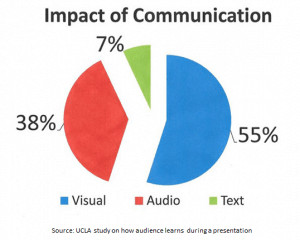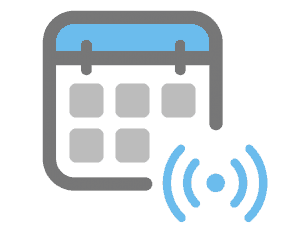
Presenting clear information effectively is key to getting your message or concept across. Today presentation skills are required in most every field in industry. Whether a student, sales representative, an administrator or executive, you will be asked to make a presentation at some point.
1. Express Your Passion and Connect with your Audience:
Time and again, great presenters say the most important thing is to connect with your audience, and the best way to do this is to let your passion for the subject be seen. Be honest with the audience about what is important to you and why it matters. Be enthusiastic and honest, and the audience will respond.
2. Focus on your Audience’s Needs
 Your presentation needs to be built around your clients needs and what your client is going to get as a result of the presentation. As you prepare the presentation, you always need to bear in mind what the clients needs are and what they desire to know. Let them express their problems and bring to them strategies/solutions to those problems. While you’re giving the presentation, you also need to be aware of your clients responses, verbal and non verbal, then respond. You need to make it easy for your client to understand and respond.
Your presentation needs to be built around your clients needs and what your client is going to get as a result of the presentation. As you prepare the presentation, you always need to bear in mind what the clients needs are and what they desire to know. Let them express their problems and bring to them strategies/solutions to those problems. While you’re giving the presentation, you also need to be aware of your clients responses, verbal and non verbal, then respond. You need to make it easy for your client to understand and respond.
3. Keep it Simple: Concentrate on your Core Message
 When planning your presentation, you should always keep in mind this question:
When planning your presentation, you should always keep in mind this question:
“What is the key message (or three key points) for my client to take away?”
You should be able to communicate that key message very briefly. Some experts recommend a 30-second “elevator pitch,” or say it in no more than 15 words. Whichever rule you choose, the important thing is to keep your core message focused, brief. and to the point. If what you are planning to say doesn’t contribute to that core message, don’t say it.
4. Smile and Keep Eye Contact with your client
 Sound easy? It may, however a surprisingly large number of sales reps fail to do this. Often lack of confidence in the product information you are presenting will keep a rep from having good eye contact during the presentation. Believe it or not clients actually pick up on this. By a simple smile and making consistent eye contact, you are building rapport, and communicating confidence, which helps the client to connect with you and your company.
Sound easy? It may, however a surprisingly large number of sales reps fail to do this. Often lack of confidence in the product information you are presenting will keep a rep from having good eye contact during the presentation. Believe it or not clients actually pick up on this. By a simple smile and making consistent eye contact, you are building rapport, and communicating confidence, which helps the client to connect with you and your company.
5. Start Strongly
The beginning of your presentation is critical. You need to grab your clients attention and hold on to it. They will give you a few minutes’ grace in which to entertain them, before they start to fall away if you’re rambling. So don’t waste that on explaining who you are. Try a story (see tip 7 below), or an attention-grabbing (but useful) testimonial.
6. Remember the 10-20-30 Rule
 This is a tip from Guy Kawasaki – Apple. He suggests that presentations should:
This is a tip from Guy Kawasaki – Apple. He suggests that presentations should:
- Contain no more than 10 slides;
- Last no more than 20 minutes; and
- Use a font size of no less than 30 point in powerpoint
This last is particularly important as it stops you trying to put too much information on any one slide. This whole approach avoids the dreaded ‘Death by PowerPoint’.
7. Tell Stories
Human beings are programmed to respond to stories. Stories help us to pay attention, and also to remember things. If you can use stories in your presentation, your audience is more likely to engage and to remember your points afterwards. It is a good idea to start with a story, but there is a wider point too: you need your presentation to act like a story. Think about what story you are trying to tell your client, and create your presentation to tell it.
8. Use your Voice Effectively
The spoken word is actually a pretty inefficient means of communication, because it uses only one of your audience’s five senses. That’s why presenters tend to use visual aids, too. But you can help to make the spoken word better by using your voice effectively. Varying the speed at which you talk, and emphasizing changes in pitch and tone all help to make your voice more interesting and hold your clients attention.
9. Use Body
 It has been estimated that more than three quarters of communication is non-verbal. That means that as well as your tone of voice, your body language is crucial to getting your message across. Make sure that you are giving the right messages: body language to avoid includes crossed arms, hands held behind your back or in your pockets, and pacing. Make your gestures open and confident, and move naturally around, if possible.
It has been estimated that more than three quarters of communication is non-verbal. That means that as well as your tone of voice, your body language is crucial to getting your message across. Make sure that you are giving the right messages: body language to avoid includes crossed arms, hands held behind your back or in your pockets, and pacing. Make your gestures open and confident, and move naturally around, if possible.
10. Relax, Breathe and Enjoy
If you find presenting difficult, it can be hard to be calm and relaxed about doing it. One option is to start by concentrating on your breathing. Slow it down, and make sure that you’re breathing fully. Make sure that you continue to pause for breath occasionally during your presentation too. If you can bring yourself to relax, you will almost certainly present better. If you can actually start to enjoy yourself, your client will respond to that, and engage better. Your presentations will improve exponentially, and so will your confidence. It’s well worth a try.
11. Follow Up & Follow Thru
 Nothing destroys the client relationship more then failed expectation that are set by the sales representative. Unfortunately many reps set themselves up for failure by committing to a timeline of followup with the client only to drop the ball. Failing to get support material and proposals out to the client in a timely fashion. Set a timeline that is reasonable and achievable. Under commit and over deliver, the converse of over committing and underdelivering will close the door to future relationship with the client.
Nothing destroys the client relationship more then failed expectation that are set by the sales representative. Unfortunately many reps set themselves up for failure by committing to a timeline of followup with the client only to drop the ball. Failing to get support material and proposals out to the client in a timely fashion. Set a timeline that is reasonable and achievable. Under commit and over deliver, the converse of over committing and underdelivering will close the door to future relationship with the client.
Use whatever system or process is necessary to assist you in organizing your follow up system. There are many tools available for free or little expense to help you in this area.

